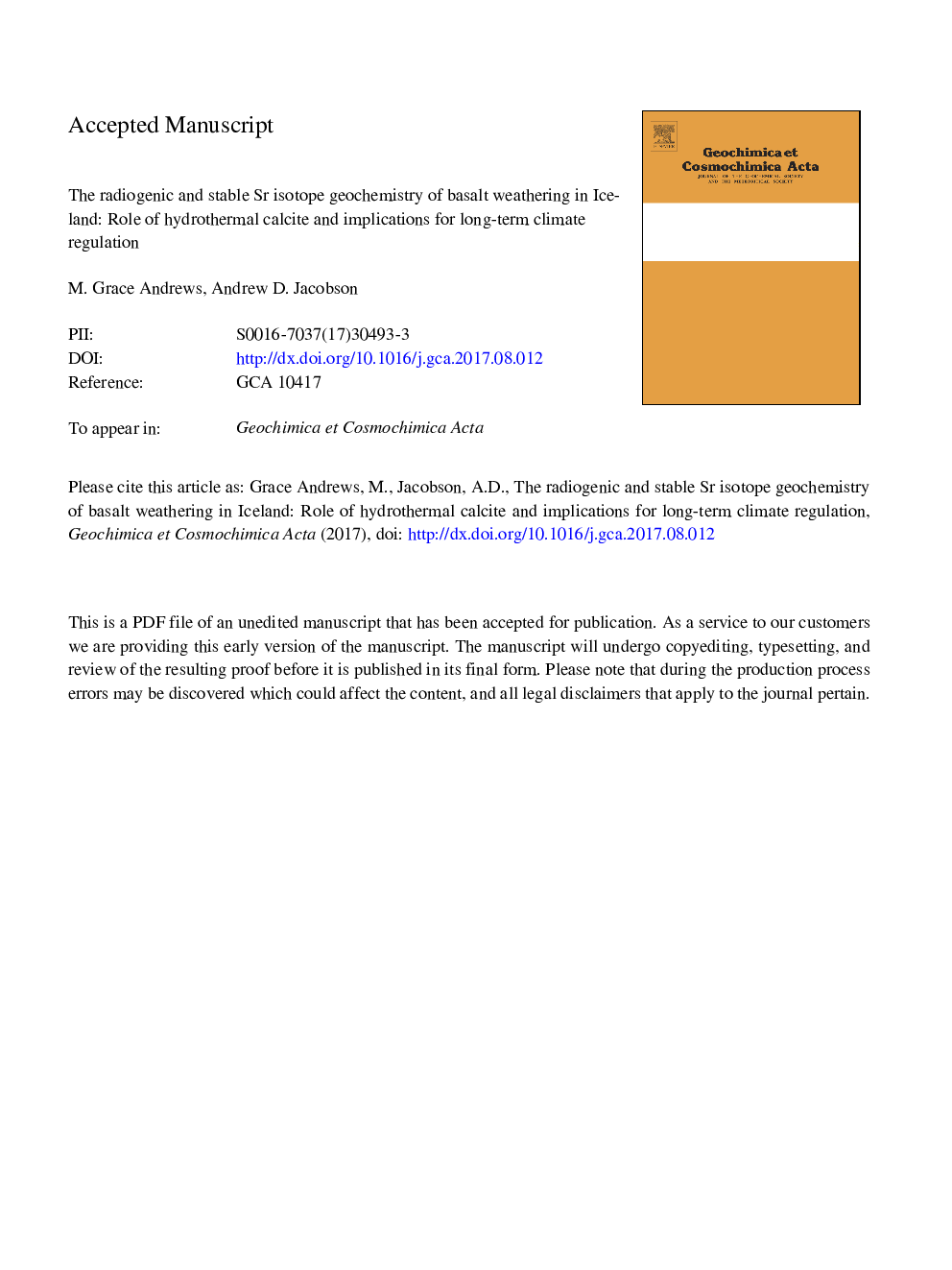| Article ID | Journal | Published Year | Pages | File Type |
|---|---|---|---|---|
| 5783243 | Geochimica et Cosmochimica Acta | 2017 | 57 Pages |
Abstract
Interpretations based on 87Sr/86Sr and Ca/Sr ratios suggest that conservative, three-component mixing between basalt, calcite, and atmospheric deposition adequately explains river geochemistry. On average, the δ88/86Sr values of glacial and non-glacial rivers (0.414â° and 0.388â°, respectively) are generally higher than those for basalt (0.276â°); however, calcite δ88/86Sr values (0.347â°) are also higher than those for basalt and span the range of riverine values. Thus, riverine δ88/86Sr values are also consistent three-component mixing between basalt, calcite, and atmospheric deposition. Isotopic fractionation is not required to explain riverine trends. Finally, model equations for the long-term C cycle demonstrate that subsurface silicate weathering reduces the magnitude of the volcanic CO2 degassing flux, which in turn causes the atmosphere to stabilize at lower pCO2 values compared to the case where no subsurface silicate weathering occurs. However, the proportion of the net volcanic C flux introduced to the atmosphere-ocean system as HCO3â after subsurface silicate weathering does not regulate long-term climate. Because hydrothermal calcite simply sequesters some of this HCO3â and delays its transmission to the atmosphere-ocean system until it dissolves at the surface later in time, it can be concluded the weathering of hydrothermal calcite bearing non-atmospheric C also has no effect on long-term climate regulation. Icelandic riverine HCO3â fluxes should be corrected for the hydrothermal calcite weathering contribution prior to quantifying atmospheric CO2 consumption rates by basalt weathering at the Earth's surface.
Related Topics
Physical Sciences and Engineering
Earth and Planetary Sciences
Geochemistry and Petrology
Authors
M. Grace Andrews, Andrew D. Jacobson,
